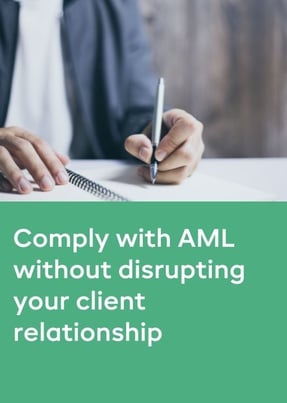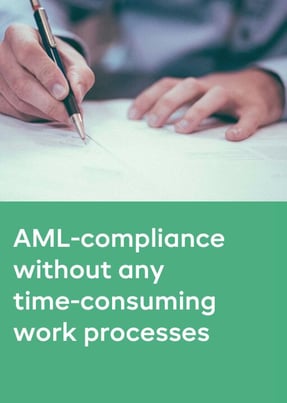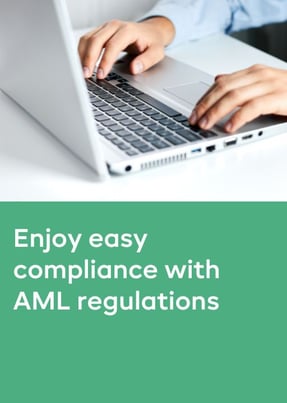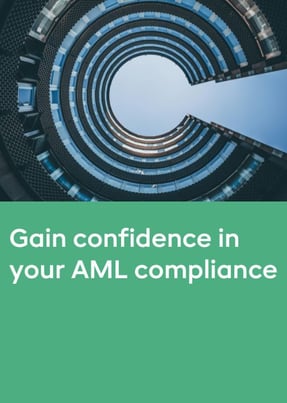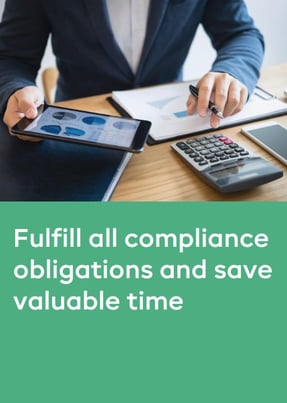- Products
- RegLab for ...
- Knowledge centre
Download the AML glossary >
 Discover the essential AML compliance terminology and gain instant access to a comprehensive guide
Discover the essential AML compliance terminology and gain instant access to a comprehensive guide - The company
Working at RegLab >
Join RegLab as the new Product Owner of our software tool and change the way the legal community approaches anti-money laundering.
There may not be any vacancies that perfectly match your profile, but that does not mean there is no room for someone who can improve RegLab.
- Book a demo
AML: 5 FAQs
AML, short for Anti Money Laundering, refers to international and European laws designed to prevent the misuse of the financial system for money laundering and terrorist financing. Below you can find the five most frequently asked questions about AML.
Why was the AML Act created?
The Anti Money Laundering Act was created to prevent and combat money laundering and the financing of terrorism. The goal is to protect the integrity of the financial system and prevent criminals from legitimising illegally obtained funds.
Firms subject to the AML Act must assess and record the risks of money laundering and terrorist financing. This has direct consequences for Customer Due Diligence (CDD) and Know Your Customer (KYC) procedures.
How does AML work at an international level?
Anti-Money Laundering (AML) is an international framework designed to combat money laundering and the financing of terrorism. Within the European Union, AML requirements are laid down in directives such as the 4th, 5th, and 6th Anti-Money Laundering Directives (AMLD). These directives set minimum standards for preventing financial crime and require EU-member states to implement them through national laws.
The AML directives outline clear rules for CDD, KYC procedures, risk-based assessments, and the obligation to report suspicious or unusual transactions.
In the coming years, the AML framework will continue to evolve with the introduction of the AML Regulation (AMLR) and the creation of the Anti-Money Laundering Authority (AMLA). Unlike previous directives, the AMLR will be directly applicable in all EU countries, creating a more uniform and consistent approach to fighting money laundering across Europe.
How does AML affect Customer Due Diligence?
If your firm falls under the AML Act, you are required to perform a Customer Due Diligence check on every client. This process is built on a solid Know Your Customer policy.
The main goal of CDD is to assess and document the risks you take when accepting new clients. The depth of the investigation depends on the risk level. You must identify and verify clients, trace the Ultimate Beneficial Owner (UBO), and understand the purpose of the business relationship.
If you detect signs of money laundering, terrorist financing, or suspicious transactions, you are obliged to report them to the Financial Intelligence Unit of your country. In the Netherlands, this is FIU Netherlands.
A robust KYC policy helps ensure safe and responsible business operations.
Who is affected by AML?
Here you will find the current overview of reporting institutions of the Financial Intelligence Unit, better known as FIU Netherlands.
- Banks
- Insurers
- Investment institutions
- Administration offices
- Real estate
- Accountants
- Tax consultants
- Trust offices
- Lawyers
- Notaries
Article 1 of this Prevention of Money Laundering and Terrorist Financing Act includes an overview of all entities that are subject to this Act.
What is mandatory?
Pursuant to Article 3 of the AML, the following is mandatory:
- Identifying your clients.
- Verifying clients’ identities.
- Tracing the Ultimate Beneficial Owner and verifying his identity.
- Establishing the purpose of the business relationship.
- Monitoring this relationship and the transactions involved.
- Screening the natural person representing the client and also whether he is authorised to do so.
- Identifying the natural competent person.
- Taking risk-based measures to verify whether your client is representing himself or a third party.
- Reporting any suspicious transactions
RegLab for AML
Do you also spend a lot of time on a Know Your Customer and Customer Due Diligence policy to comply with AML requirements? Despite the frustrations they may generate, the KYC principles are becoming increasingly important. RegLab helps firms quickly, safely and easily comply with the laws and regulations pertaining to the Know your Customer policy.
Themed file: fully prepared for the supervisor’s audit
This article is part of a number of articles and downloads that will help you prepare yourself for the supervisor’s visit. This content is based on a supervisor's FAQs during an audit. Do you want to be 100% AML-proof and ready for the supervisor’s visit? Find all FAQs in our Knowledge Centre.
Knowledge centre
Download the whitepaper: "AMLR and AMLA"
A clear overview of what the AMLR and AMLA entail, and how this will affect your firm.
